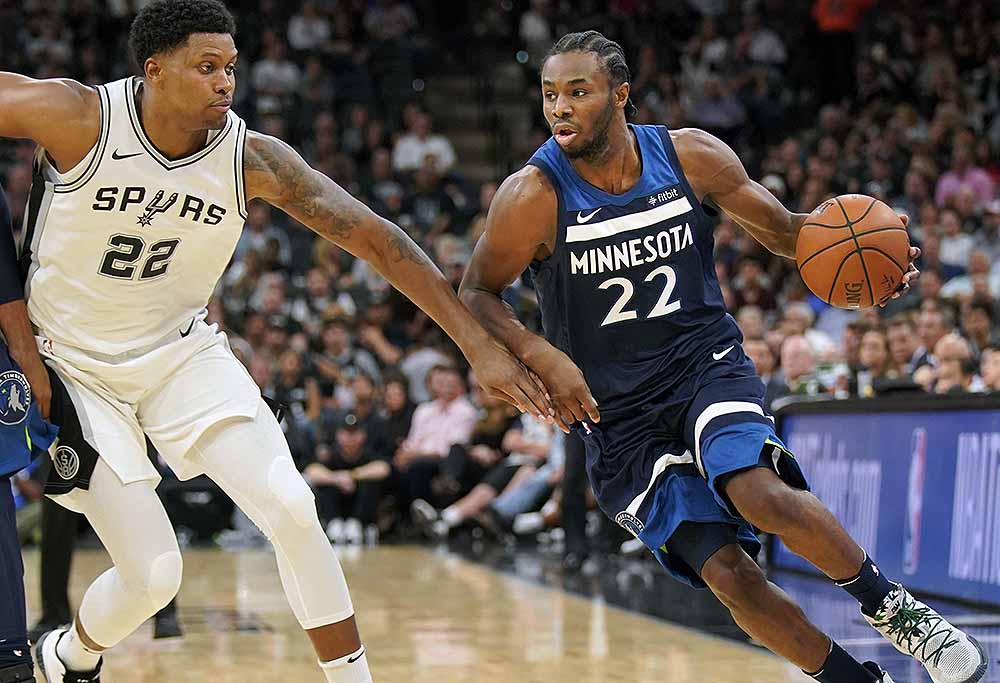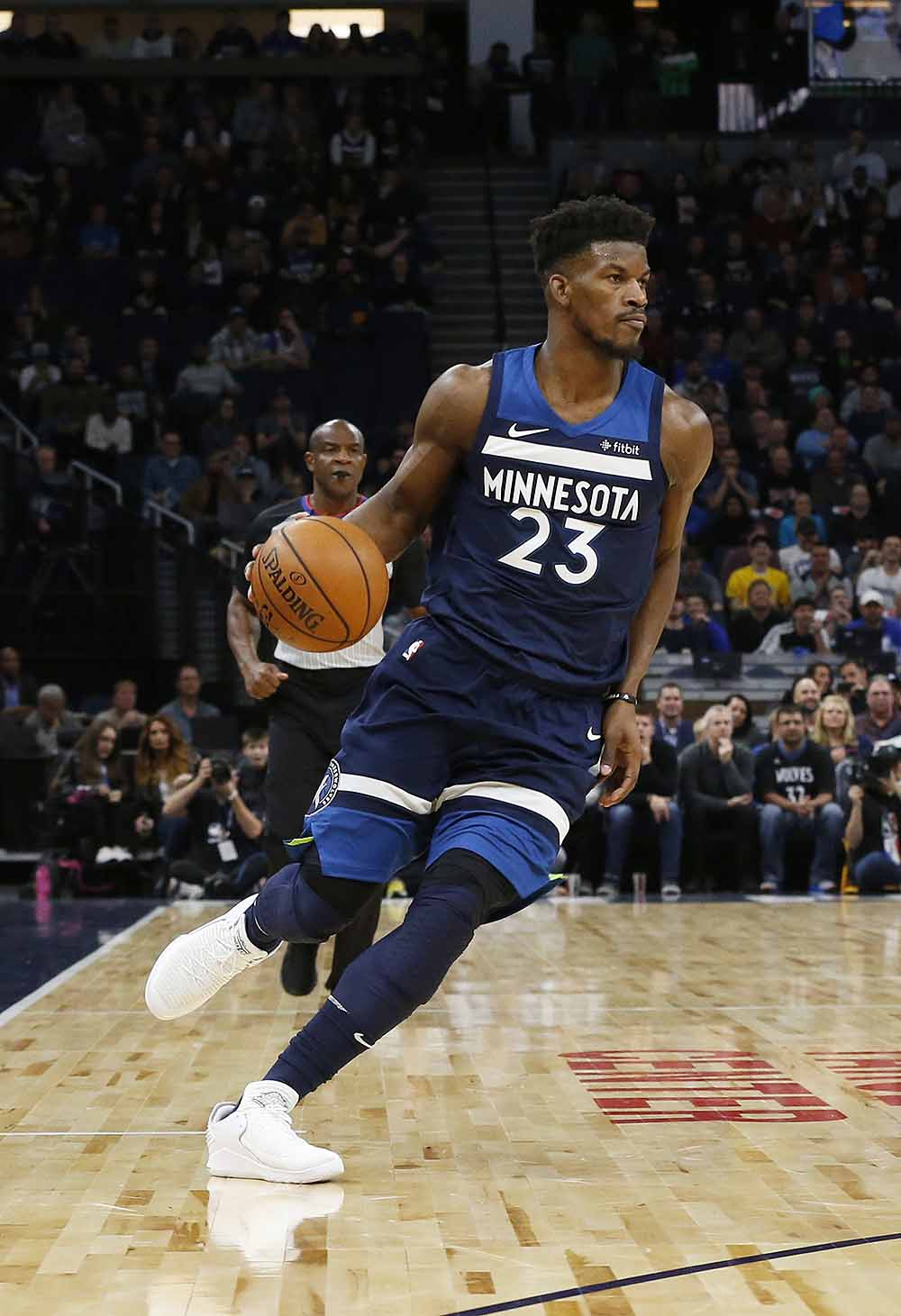WATCH: Liz Cambage ejected in Chinese league after elbow to the face, still gives ref a gobful
Not a great look for the controversial Aussie.

After completing his fourth NBA season, a lot has been discussed about Andrew Wiggins and his performances in 2017-18.
This underlines arguments about whether the 2014 number one overall pick had no one to blame but himself this campaign, or was being altered to fit in the flow of a new-look team that saw his statistics dip?
After putting pen to paper on a $148 million max contract before the start of the season, there was a lot of optimism and expectation that surrounded the young Canadian. It was then up to him to show if he could relish under the faith shown by the Timberwolves organisation and therefore take his game to the next level.
Despite being a part of the group that ended its long 14-year playoff drought by finishing eighth in the talented-stacked western conference, an asterisk was always placed on Wiggins throughout the year. Many believe the former University of Kansas player did not live up to that max deal as he struggled to consistently perform at a high standard on a back-to-back basis.

Minnesota Timberwolves’ Andrew Wiggins. (AP Photo/Darren Abate)
The 23-year-old averaged 17.7 PPG, 4.4 RPG and 2.0 APG in 2017-18. While his rebounding and assist numbers were nothing out of the ordinary, his scoring dropped significantly compared to last year where he averaged 23.6 PPG. His field goal and three point percentages also slumped to 43.8 per cent and 33.1 per cent respectively. Another glaring mishap was his free throw shooting. In his first three seasons in the league Wiggins’ shot a respectful 76 per cent, however his form from the free throw line sunk to 64.3 per cent this term.
Jimmy Butler’s unfortunate injury in February against the Houston Rockets came at a time when the Wolves were riding high in third position and looking to secure home court advantage for the playoffs. With their best player forced to sit out on the sidelines, Wiggins and Karl-Anthony Towns had the responsibility of leading the Minnesota outfit.
In Butler’s absence, the Wolves noticeably struggled without their 4-time all-star, going 8-9 that saw the franchise move down the pecking order to sixth.
In a time that the organisation needed their young star to step up, Wiggins was unable to provide the athleticism and skill to score the basketball. He only managed to chalk up 20+ points twice in that 17-game stretch without Butler, which spoke volumes of his struggles to take over on the attacking end.
This season he was often seen as a player who stood on the wings waiting for the ball. Often Jeff Teague or Butler were the men who orchestrated the offence, so when Wiggins received a look, he simply could not knock down his shots.
It is possible that the large contract extension may have clouded his preparations and performances this season. Stories also emerged during the year that he was not happy at being the third option in the team.
On the flip side of this segment, there are signs that point towards Wiggins being surplus to requirements this season.

Minnesota Timberwolves’ Jimmy Butler (AP Photo/Jim Mone)
The recruitment of Bulter from the Chicago Bulls meant he became the primary scoring option and given Towns’ ability to also score, it left the number 22 as the third option on offence. This arguably affected his attack-minded approach and having a bigger influence on the floor.
Along with Towns, Wiggins was afforded most of the responsibility down the stretch to begin the season, with examples stemming from his buzzer-beating three to defeat the Oklahoma City Thunder and his ferocious slam-dunk over Miami Heats Josh Richardson.
For October and November respectively, he averaged 19.7 PPG and 18.7 PPG to start the season on the front foot. However, as soon as Butler finally found his feet in the Wolves system, the talented youngster was essentially obligated to let the 28-year-old and Towns be the main vocal points in attack.
A result of his role being reduced was highlighted in his shot attempts, which decreased from 19.1 down to 15.9. This also limited his prospects of being able to use his long and athletic body to drive towards the basket and make trips to the free-throw line. Last season, Wiggins on average made 6.6 trips to the free throw line, whereas in 17-18, he only made 3.8.
Anyone who watches the NBA know that once Wiggins can get that half a step on a defender, he can finish in multiple ways in the paint. Nevertheless, he was often found standing around the perimeter acting somewhat of a spot up shooter at times, which is not his best asset.
Wiggins partook in his first postseason when they Wolves took on the number one seed Houston Rockets. He averaged 15.8 PPG on 44.1 per cent shooting, 5.2 RPG and 2.0 APG. When taking this into consideration with the struggles of Butler and Towns throughout the series, the Canadian native was arguably Tom Thibodeau’s best player.
Now with that contract talk behind him and just coming off his debut playoff campaign, the agile guard will no doubt be looking to work on his craft this offseason. Bars will be set to come back even stronger and display not only his worth in 2018-19, but help build on his squads narrow eight place finish.
Did Wiggins underachieve or did his subdued season have to do with paving the way for Butler and Towns?